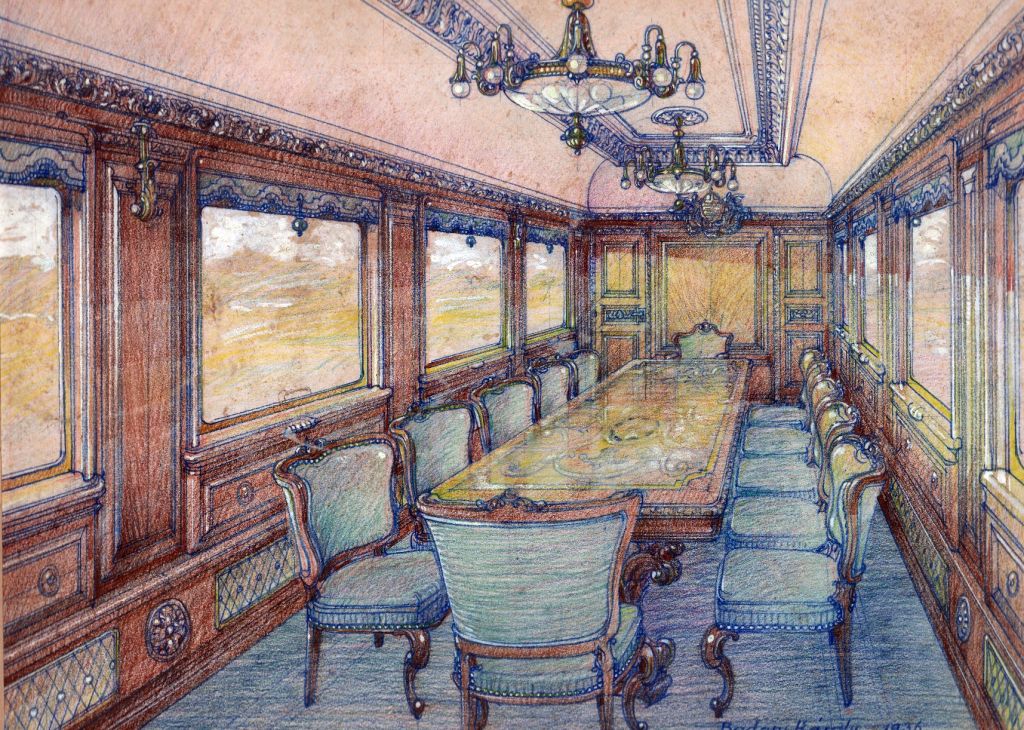How did Miklós Horthy's dining car end up in a holiday home in Slovakia? How did the lost train arrive home? What did the governor's protocol train look like in its heyday? All of this is revealed in an interview with Gábor Zsigmond, Deputy Director General of the Hungarian Museum of Technology and Transportation. An incredible and unusual story - with a happy ending!
How did Miklós Horthy's dining car end up in a Slovakian holiday home?
There are still many questions about this, but it is certain that the train arrived on the shores of Lake Szenc in the second half of the 70s, where it was walled up and a holiday home was created. A former railway worker bought the car and used it that way for decades. This is not as unusual as it first appears. If you think about it, similar things happened in this country in that period as well. Such railway vehicles have been recycled elsewhere, and this happened here as well. They temporarily lived in the former dining car.
Last year, the resort's heirs decided to demolish the fifty-year-old holiday home and build a new one in its place.
We learned from Slovak museologists and railway-friendly circles that there are Hungarian inscriptions on the car. It soon became clear that one of the cars of the Turán train used by Miklós Horthy was hidden in the walls. The Transport Museum - through MÁV Nosztalgia Kft. - contacted the owners of the holiday home
and bought the assembly before it was dismantled.
How did Turán 9 end up in Slovakia?
In the fall of 1944, many trains left first for Transdanubia and then for Germany. Hungarian MÁV railway trains were often stuffed with state and private property or valuables stolen from Jews. These assemblies were directed to the west by the power of the time. However, due to the consequences of the war, hundreds of trains were stranded in Czechoslovakia.
The Turán arrived in Czechoslovakia in April 1945 via the Bavarian railways, where it languished for months.
The train was seized not long after, and at the behest of the Czechoslovak state railways, it was directed to Prague, where it was used as a protocol train until the 1970s.

Salon interior on a visual plan made in 1936 (Source: Hungarian Museum of Technology and Transportation)
Did Hungary never ask for the train back?
Of course! But we did not get back not only this train, but many others and many locomotives. In 1949, Lajos Bebrits - the Minister of Transport and Posts at the time - specifically asked the Czechoslovak side to remove the Turán railway from the scope of the Csorbató Convention and return it to Hungary. Bebrits informed his Czechoslovakian colleagues that the MÁV cannot provide adequate travel for the leading personalities of the Hungarian People's Democracy and their foreign guests, so they are requesting the return of the train.
It is clear that the minister asked for the car back for Mátyás Rákosi, but the Czechoslovak leadership did not return it.
Special trains were later built for Mátyás Rákosi and János Kádár, was this also the case for Miklós Horthy?
No, the Turán was not a protocol train built for Miklós Horthy. The wagons of the assembly were usually made from earlier traffic wagons. The Turán eventually became a 12-car train, but it looked different, for example, in the early 1930s or during the war.
The rescued car 9, for example, spent 25 years in passenger traffic before it was converted into a protocol car.
This is not an everyday background story for heads of state or government instruments.
According to them, the car was already in service before the First World War?
That's right! It is a Ganz piece made in 1913, which is one of the products of Hungarian railway vehicle production. It was originally on the southern railway line, then later it was transferred to the Danube–Száva–Adria Railway. The latter was a private railway between the two world wars, but after it ceased to exist, the trains went to the vehicle repair shop in Dunakesz in 1937, where they were converted. The drawings made for the works there, the interior spaces of the railway assembly, are known precisely because they were fortunately preserved in the archives of the Hungarian Technical and Transport Museum.
The full interview HERE .
Cover image: The removal of Miklós Horthy's dining car from the Szenc holiday home (Source: Hungarian Museum of Technology and Transportation)













